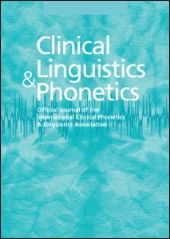Abstract
Comparative research on aphasia and aphasia rehabilitation is challenged by the lack of comparable assessment tools across different languages. In English, a large array of tools is available, while in most other languages, the selection is more limited. Importantly, assessment tools are often simple translations and do not take into consideration specific linguistic and psycholinguistic parameters of the target languages. As a first step in meeting the needs for comparable assessment tools, the Comprehensive Aphasia Test is currently being adapted into a number of languages spoken in Europe. In this article, some key challenges encountered in the adaptation process and the solutions to ensure that the resulting assessment tools are linguistically and culturally equivalent, are proposed. Specifically, we focus on challenges and solutions related to the use of imageability, frequency, word length, spelling-to-sound regularity and sentence length and complexity as underlying properties in the selection of the testing material.
Access the article on the homepage of Clinical Linguistics and Phonetics.
